APRIL BIRTHSTONE-DIAMOND
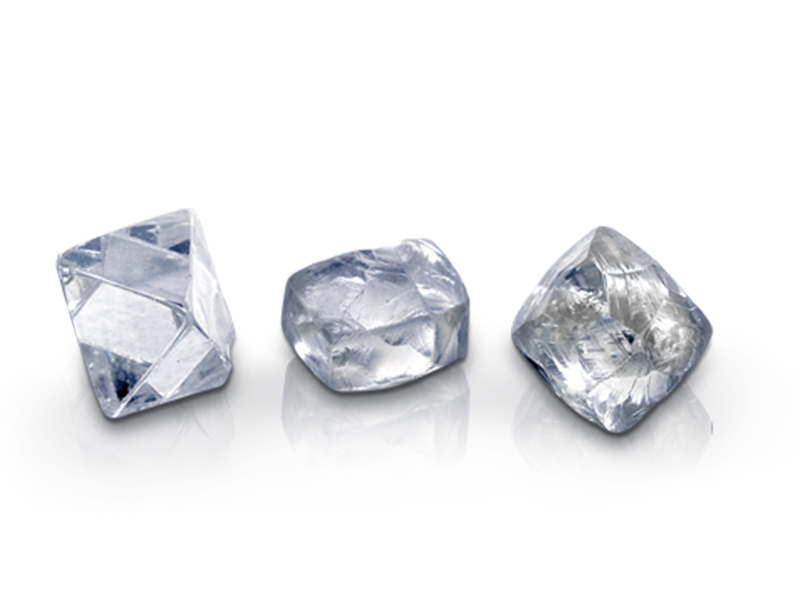
Each carbon atom in the crystal forms a covalent bond with the other four adjacent carbon atoms in the sp3 hybrid orbital, and each four adjacent carbon atoms constitute a regular tetrahedron. The crystal type is a diamond structure, so the unsharp crystal shape is often a regular octahedron. The C-C bond in diamond is very strong. All valence electrons participate in the formation of covalent bonds. There is no free electron, so the hardness of diamond is very large, non-conductive, and the melting point is 3815 °C. The diamond has a flaming point of 720 to 800 ° C in pure oxygen and 850 to 1000 ° C in air. In the industry, diamond is mainly used in the manufacture of probes and grinding tools for drilling. The shape-completed diamond is polished, called diamond, which can be used to make high-end accessories at very high prices.
Carbon has three known allotropes: diamond, graphite, and fullerenes. Thermodynamically, the stability of diamond is lower than that of graphite, which can be spontaneously converted into graphite. However, at normal temperature and pressure, the speed of this transformation is very slow and negligible, so the diamond is stable. The diamond formed by nature is generally formed in the high temperature and high pressure environment inside the earth, and later brought to the surface by geological tectonic movements such as volcanic eruptions, so many diamonds are found near the volcano. Modern industry can produce diamonds at high temperatures and pressures, called synthetic diamonds.
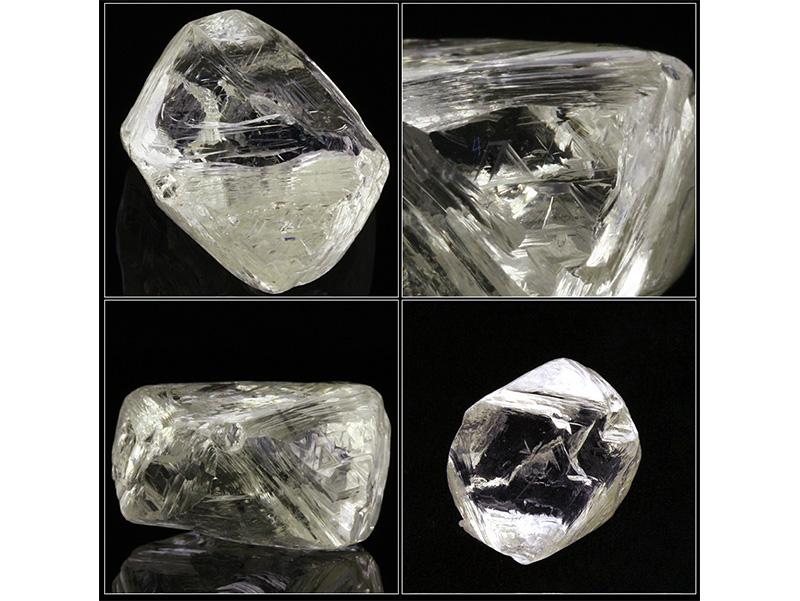
Diamond has a Mohs hardness of 10; due to the highest hardness, diamond cutting and machining must be carried out using diamond powder or laser (such as 532 nm or 1064 nm wavelength laser). The diamond has a density of 3.52 g/cm3, a refractive index of 2.417 (under 500 nm light waves), and a dispersion ratio of 0.044.
Industrial applications
Due to its extremely high hardness and high thermal conductivity, diamonds can be used on sandpaper, drilling and abrasive tools to cut and characterize other materials, as well as heat sinks such as large integrated circuits.
However, since GE acquired high-quality and high-pressure synthetic diamond technology in 1955, scientists have used high-temperature and high-pressure to make diamond particles. Nowadays, fine-grained synthetic diamonds are cheaper than natural diamonds of the same class, so the industrial value of natural diamonds is completely Disappeared; the main use of natural diamonds has been limited to jewelry and viewing.
Ornamental use
Due to its high refractive index, diamonds shine under the light and are called diamonds. Giant diamonds are often worthless. When diamonds are blue, green or pink, they are very rare, while those with deep and bright colors are more expensive. The most expensive colored diamonds at present are diamonds with rich red.
Diamonds are divided into two types, one type and two types, which are mainly based on whether it contains N elements: one type contains; type two does not. The blue diamond is a two-B type, which is a semiconductor.
carat
Carat, or card, Carat, is the quality unit of diamonds. One carat is equivalent to 200 milligrams. According to legend, the diamond used by early diamond merchants to weigh diamonds is the fruit of the carob tree. One such fruit weighs about 200 milligrams. Because the density of diamonds is essentially the same, the heavier the diamond, the larger the volume. The bigger the diamond, the more rare it is, and the higher the value per carat. The table below shows the price comparisons for 2005.
Clarity
The clarity is determined by the amount of inclusion in the diamond. The inclusions may be natural impurities or cracks. The number, location, size, etc. of the inclusions will affect the rating. Only 20% of the diamonds mined in diamond mines can be used as gemstones, and the rest are usually only used for industrial purposes because of the high content of inclusions. Most of the 20% to 40% of gem-quality diamonds contain visible inclusions. Diamonds above this level are more popular. Diamonds of the perfect grade are rare and are called "museum-grade" diamonds. A 10x magnifying glass is usually used to observe the size, quantity, distribution and the degree of influence on the brilliance of the diamond inside and on the surface of the diamond. The general pass grade is as follows:
FL - "Flawless", perfect. Generally shown to be magnified 100 times without inclusion inclusions or external imperfections.
IF - "Internally Flawless", flawless inside. No inclusions were shown at 100x magnification, but they may show some fine outer flaws that can be removed with polishing.
VVS1, VVS2 - "Very Very Slight", very small. It is very difficult to see the contents under the magnifying glass of 100 times. Normally, the naked eye will not see the contents, and it is difficult to find their contents with a microscope or a magnifying glass.
VS1 and VS2 - "Very Slight", very small. A slight inclusion is seen under a 10x magnifying glass, but the inclusions are usually visible under a magnifying glass or microscope.
SI1 and SI2 - "Slight Inclusions", small inclusions. The contents are clearly visible under a magnifying glass of 10 times and the contents are likely to be visible to the naked eye.
I1, I2 and I3 - "Imperfect", clear inclusions that can be seen by the naked eye, and the durability of this class of diamonds is also reduced by the influence of inclusions.
Under modern technology, some diamonds can be repaired. However, the value of the repaired diamond will be slightly lower.
The color of the diamond will be biased by chemical impurities. A perfectly pure diamond should be transparent and colorless. The preference for a different color of a diamond affects its value. Most of the diamonds are yellowish due to nitrogen atoms. The more yellowish the white diamond, the lower the value. But pink or blue diamonds are more expensive. A diamond with a strong color that is biased towards pink or blue may be worth the price.
The general method is to divide the diamond into different grades according to the degree of yellowing, and compare the sample with the colorite of the known color grade, with the highest D grade and the lowest Z.
Colorless: D, E, F
Close to colorless: G, H, I, J
Yellowish: K, L, M
Light yellow: N, O, P, Q, R
Light yellow: S, T, U, V, W, X, Y, Z
When considering the color of a diamond, the fluorescence reaction should also be taken into account. The fluorescence reaction refers to the color of the reaction that occurs when the diamond is exposed to ultraviolet light. However, the little fluorescence response affects the value of diamonds, unless a diamond with very strong fluorescence affects its transparency and brilliance, and produces an oil-like appearance that will detract from the beauty and value of the diamond. Light does not give the diamond an oily appearance and should not be considered a disadvantage.
Fluorescence response is divided into 1. NONE 2. FAINT 3. MEDIUM 4. STRONG 5. VERY STRONG
5.Cut
Cutting refers to how diamonds are cut into gemstones from previously mined quarry. Cutting is often an indicator that best affects the quality and value of a diamond, but it does not have a single grading method.
shape
Diamonds that have not been cut and polished have no radiance. The function of cutting is to cut the diamond into a shape that maximizes the reflection of the light. The cutting of diamonds is also different because of the shape, quantity and arrangement of the facets, such as: bright "BRILLIANT", stepped "STEP", hybrid "MIXED"............. .and many more. In 1919 mathematician Marcel Tolkowsky invented a cutting method that would make diamonds shine at the top. This cutting method is called round multi-faceted type, which is Round Brilliant, which is the most common round diamond. The general standard for such diamonds is that there are fifty-seven faces or fifty-eight faces, thirty-three faces in the crown, twenty-four faces or twenty-five faces (that is, grinding one face at the apex) Below the waist. Shapes that are not part of this cut are called Fancy Cut and include square, pear, heart, and so on.
Several common cutting forms
Round
Emerald type
Oval
Pear shape
Princess square
Pincushion
Heart-shaped
Quality
The same weight and color, and the cut diamonds are more brilliant than the cut diamonds. Judging whether the cutting is excellent depends on the various proportions of the diamond, whether the faces are symmetrical, various angles, and so on. Sometimes the cutting angle of the diamond differs by a few degrees, which can have a completely different effect.
Cut diamonds are often only half the weight of the original stone. In order to retain the most weight in the diamond, or to avoid impurities on the rough, some diamonds will sacrifice the perfect cutting ratio when cutting.
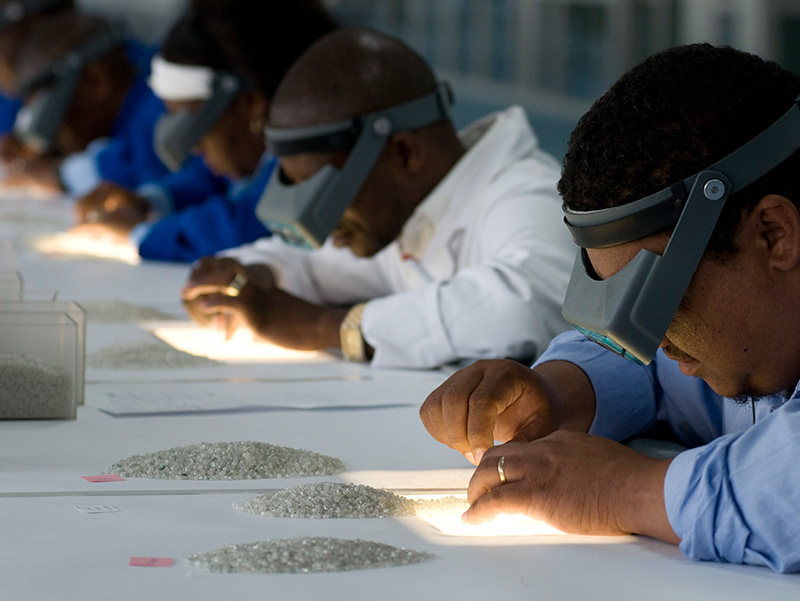
Gemological Institute Of America
International Gemological Institute
European Gemological Institute
Belgian Diamond High Council (HRD)
American Gem Society (AGS)
Interpretation of diamond proper nouns
Full depth percentage "DEPTH%": High ÷ width (average diameter) = full depth percentage is based on width (round is based on average diameter).
Desktop percentage "TABLE%" Round diamond: the longest diagonal of the desktop ÷ width (average diameter) Fancy diamond: desktop width ÷ width (average diameter)
Waist circumference classification "GIRDLE": The waist circumference is divided into eight grades. Generally speaking, it is ideal to be moderately thick.
Very thin (EXTERMELY THIN)
Very thin (VERY THIN)
Thin (THIN)
Moderate (MEDIUM)
Slightly thick (SLIGHTLY THICK)
Thick (THICK)
Very thick (VERY THICK)
Extremely thick (EXTREMELY THICK)
The bottom of the "CULET" tip is divided into the following order:
None (POINTED OR NONE)
Very small (VERY SMALL)
Small (SMALL)
Zhongda (MEDIUM)
SLIGHTLY LARGE
Large (LARGE)
Very large (VERY LARGE)
EXTREMELY LARGE
Modification "FINISH": including polishing "POLISH" and symmetry "SYMMETRY" are usually rated in the following five levels:
EX (EXCELLENT)
VG (VERY GOOD)
DG (GOOD)
P (POOR)
Produce
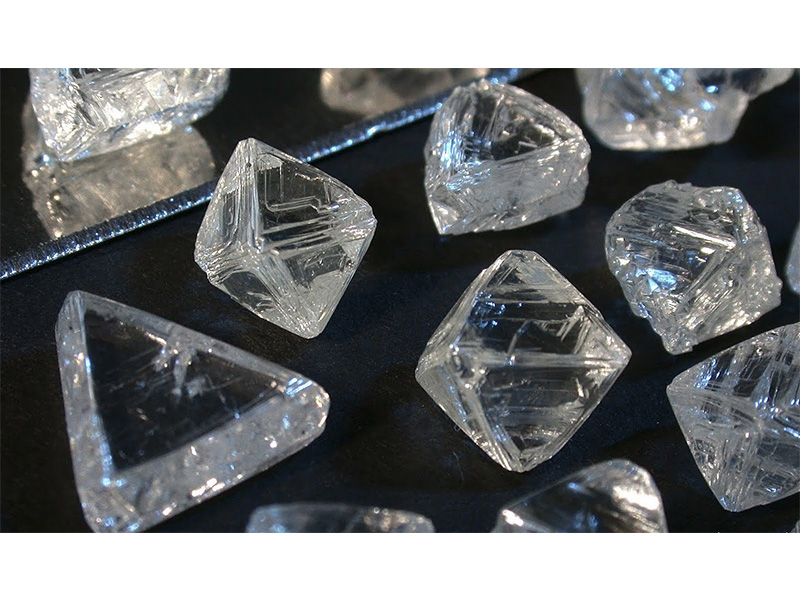
About 49% of the diamonds come from central and southern Africa, although diamonds of important origin have been found in Canada, India, Russia, Brazil and Australia. They are mined from volcanic pipes composed of kimberlite and lamproite. The high temperatures and high pressures deep in the earth create diamonds that carry diamonds from the ground to the surface.
At present, the diamond supply chain is only controlled by some large companies and is highly concentrated in a few regions of the world. In September 2012, Russia claimed to have discovered diamond mines in excess of the global reserves in the Poppi crater in its territory.
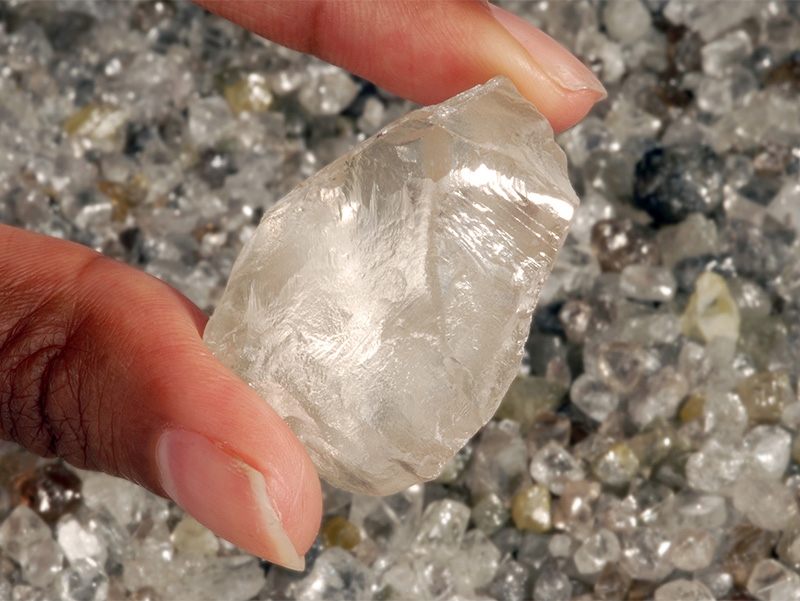
The exploitation of natural diamonds is often the subject of conflict. For example, diamonds mined in the field by African paramilitary forces are called "blood diamonds" or "conflict diamonds". Because blood diamonds have been the cause of long-term civil war in many countries of origin, the United Nations resolution prohibits the purchase of diamonds from civil war countries. Therefore, in the trading of blood diamonds, it is suggested that the "4C" system be promoted to the "5C" system, and the new standard "conscience" should be added under the four standards to prove that the diamond is not used to finance the war, as well as in the equipment. Safe drilling and mining, no child labor or illegal foreign workers are employed in the process. Under the new system, more than one card of diamonds will be attached with computer chips for mining diamond photos.
Synthetic diamond
Synthetic diamonds are attempted to artificially create diamond growth by applying a high temperature and high pressure environment to the seed crystal.
In recent years, due to the high thermal conductivity of diamonds, synthetic diamonds are also expected to replace silicon as a semiconductor material to greatly accelerate the performance of electronic products. Many companies are also developing the concept of "diamond computer"; some even shouted that Silicon Valley will be renamed Diamond Valley, Japan Telecom The company (NTT) announced in 2003 that it has developed a diamond semiconductor component that operates at 81 GHz faster than the previous component speed. NTT said the progress shows the ability to amplify mm-waves in the 30 GHz to 300 GHz band for the first time, enhancing the capabilities of digital TV broadcasting.
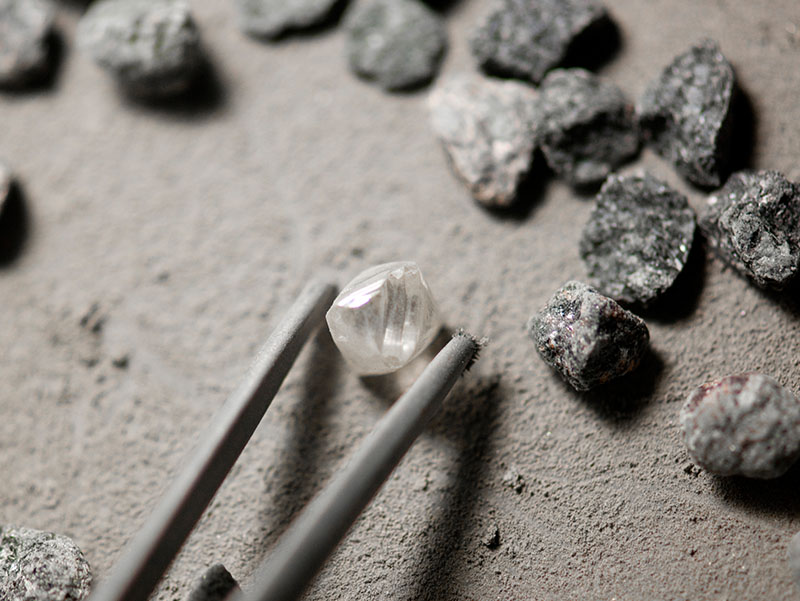
In the past, the technology of the 20th century can only produce tiny diamond particles, which are added to sand wheels and cutting knives for industrial use. There is no jewel value. After the invention of chemical vapor deposition, large particle diamonds appeared, but most of them have mixed colors and impurities. The size is still relatively small.
However, after Mao Heguang and others publicly published the patent application for CVD diamonds, hundreds of laboratories all over the world invested in the development of such CVD (Chemical Vapor Deposition) diamonds, but they later quit because of the inability to break through the growth of diamonds. Mao Heguang's laboratory is a million-dollar experiment. Finally, in 2005, he discovered the secret recipe for the rapid growth of artificial diamonds.
He produced 10 carats of pure diamonds and sensationalized the diamond industry. After that, Mao Heguang only said that he would negotiate with many jewelers. In the production application, since then, there has been no publication of diamond-related papers and no public information on subsequent production applications, which has become a mystery in the academic world. In 2010, Dr. Meng Yufei of the Maohe Research Group synthesized the world's largest CVD colorless diamond, which was 2.3 carats after cutting and was of high quality natural diamond.
The main producing countries are the United States, Russia, Ireland and South Africa.
Diamond maintenance
Please help improve this entry, and further information may be found in the discussion page or in the expansion request. Please remove this template after expanding the entry.
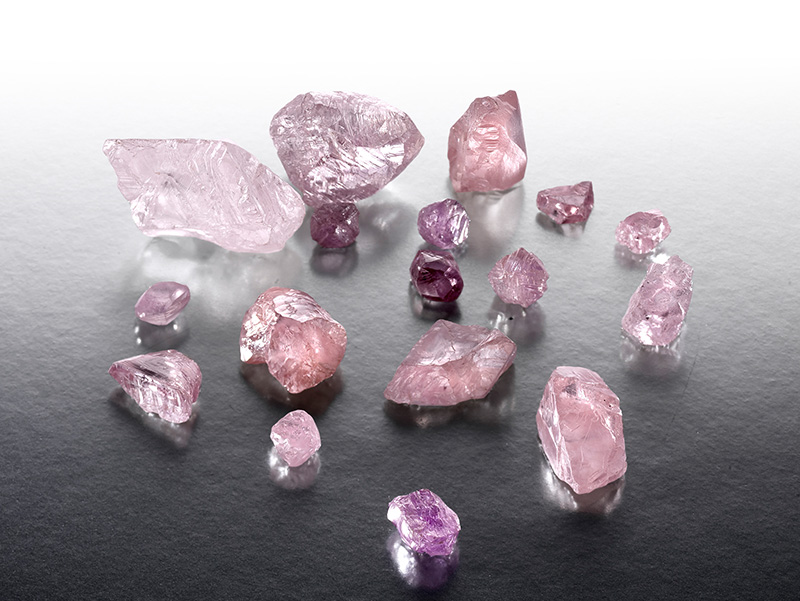
Because the composition of the diamond is carbon, it is afraid of high temperature. The 1 carat diamond will completely turn into carbon dioxide after 70 minutes in the general fire scene (temperature 1130 degrees). Although the diamond is hard, if you put the two diamonds together, they will scratch each other. Therefore, the diamond should be placed in the jewelry box independently to avoid storage with other accessories. Diamond jewellery can be taken to the jeweler for inspection once a year, to see if the setting is loose and worn, and to re-fix and polish it.
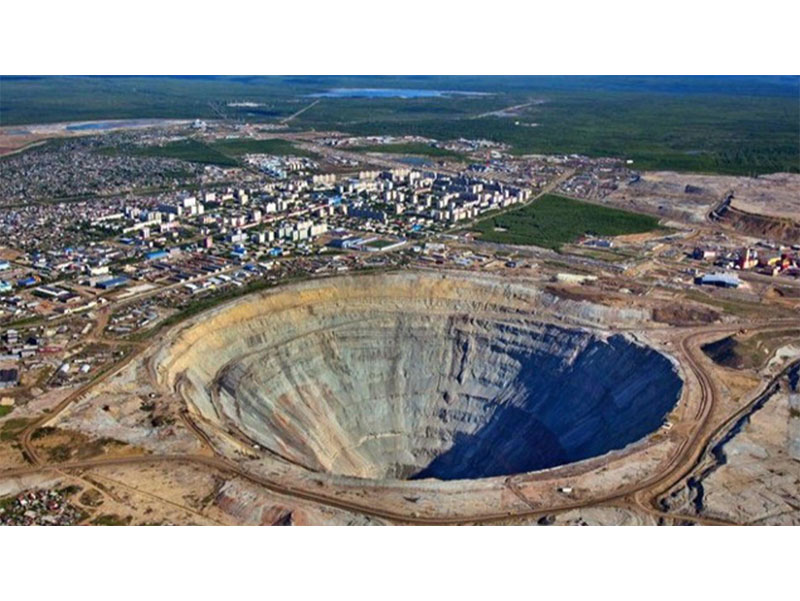
You can also use a professional diamond rag to gently rub the diamond, or go to the diamond shop to buy a staff instead of cleaning. The carbon bond of a diamond will decompose under intense or long-term exposure to ultraviolet light, so it should be stored in a place where there is no sunlight or ultraviolet light. In case of corrosion-like signs on the surface of the diamond. Don't wear diamonds when washing dishes or doing rough work. Although diamonds are hard, they may be scratched if they are hit hard in the direction of their texture. Diamonds should be careful to avoid collision or fall. Although the diamond has the highest hardness, the toughness is relatively small. It will not break when it falls from a height, but it will crack.

Diamond trading must be traded through a specific institution, a closed market. Today, more than half of the world's rough diamonds are concentrated in the Central Selling Organization (CSO) in London, England. There are fewer than one hundred in the world. The sightholder can purchase from the agency. Among them, the well-known diamond brand De Beers (the classic ad: diamonds are long-lasting, one is forever)[18] has huge power in this market, and Japan can see the goods in the central sales organization. Only Tianqi Zhenzhu. After the rough diamonds have been cut, they are sold through the diamond exchanges and then reach the various channels and then sold to the general consumers.
